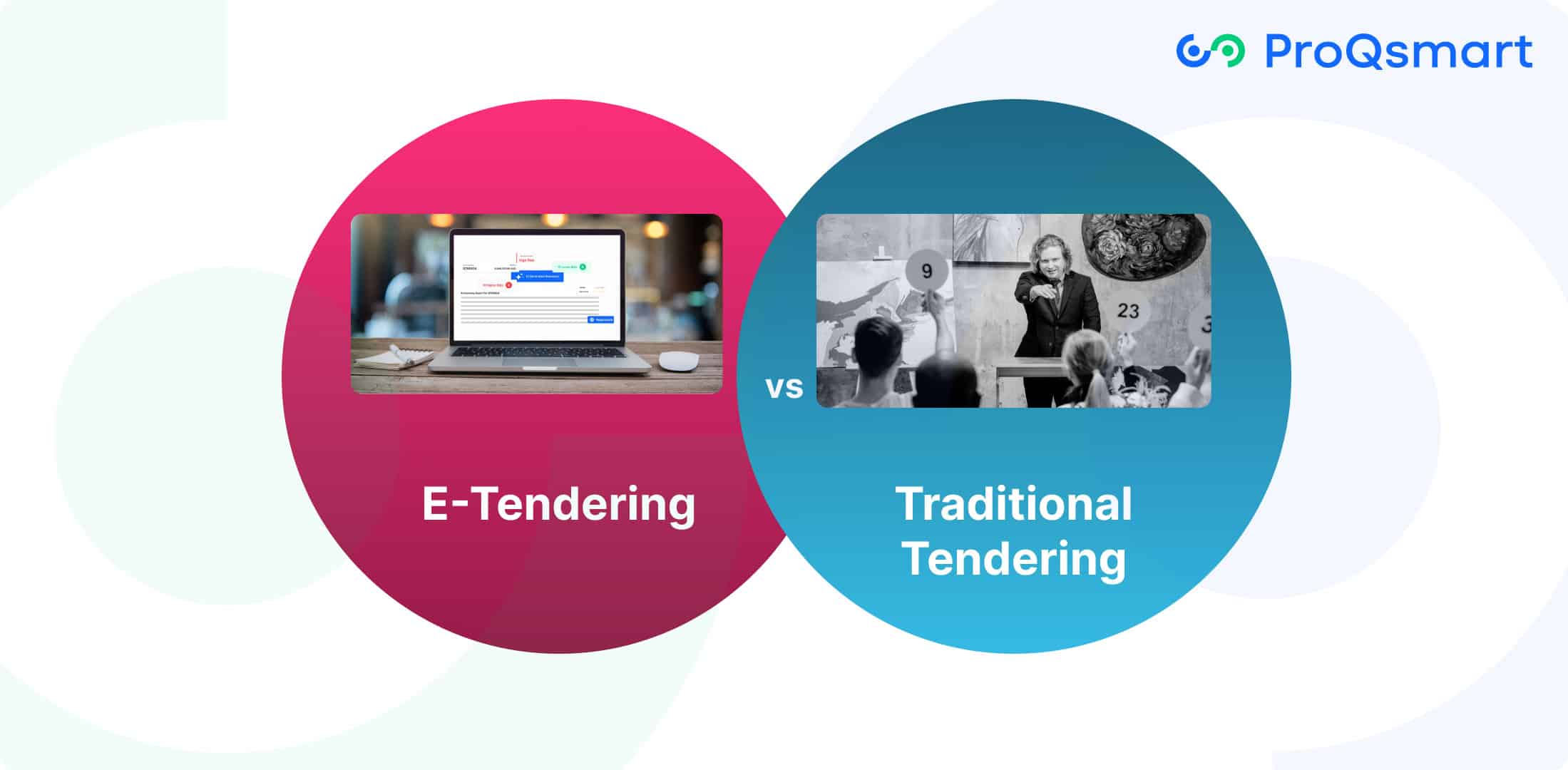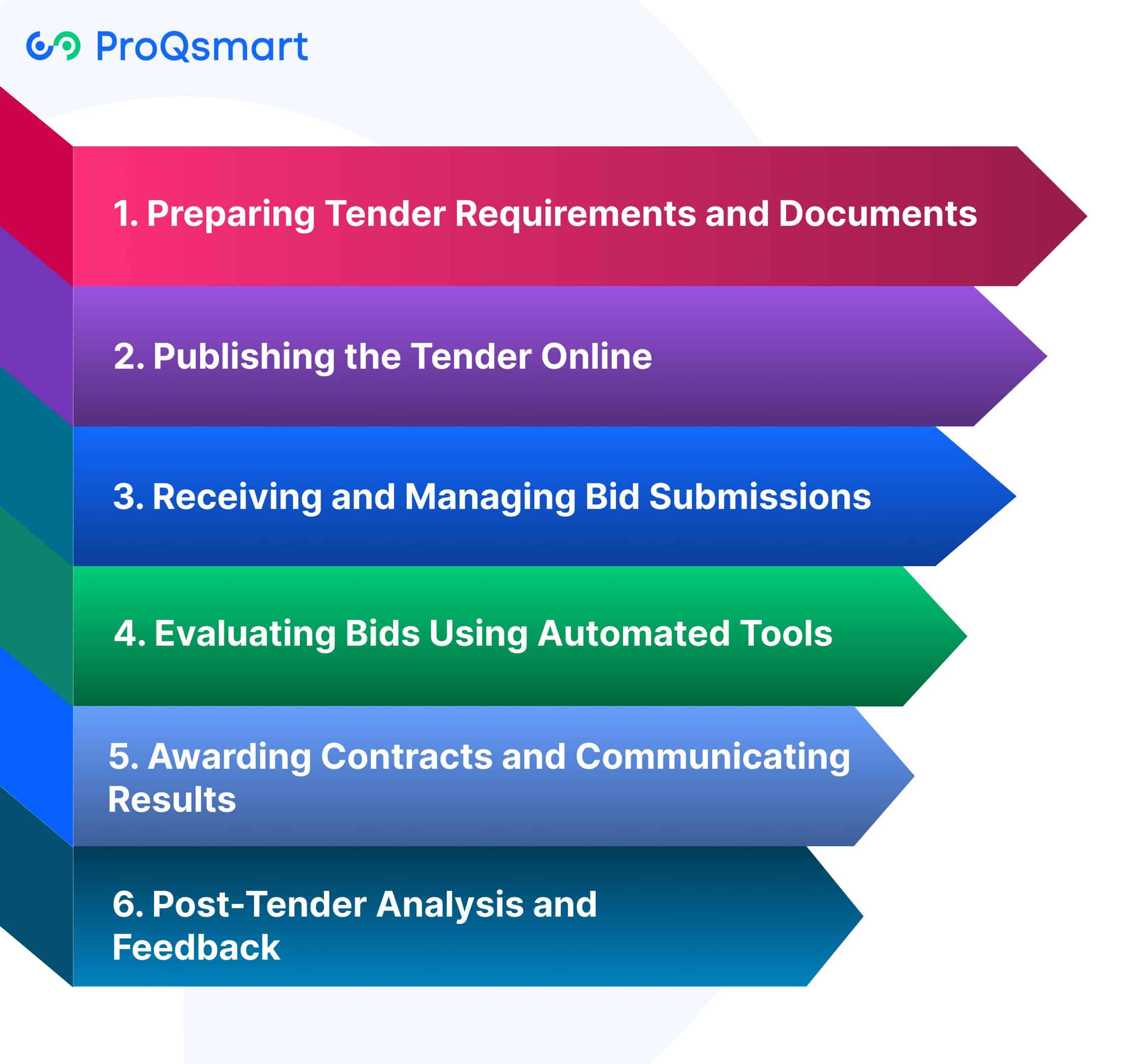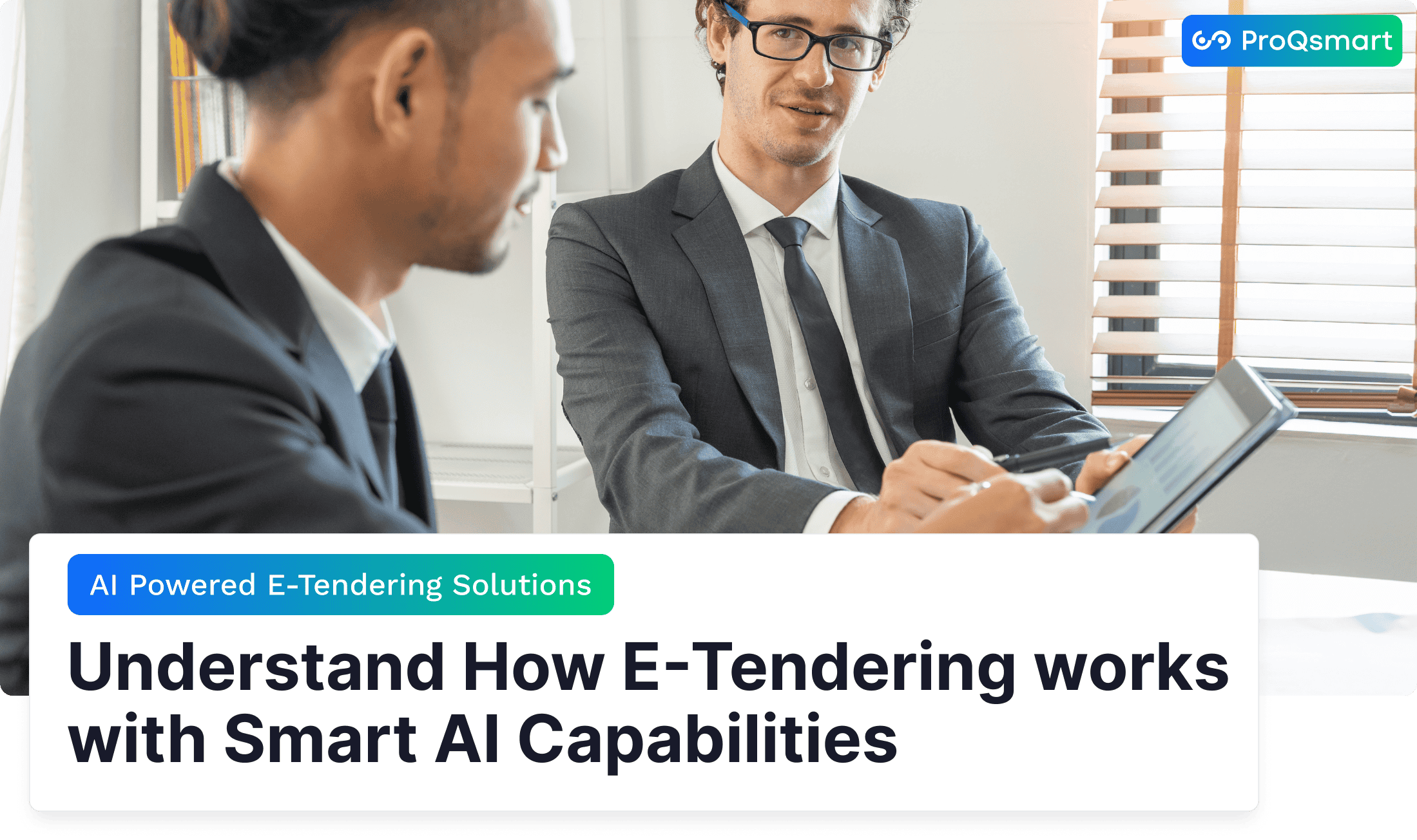In industries such as construction, manufacturing, and interior fit-outs contracts, e-tendering plays a crucial role in mitigating risks by fostering a level playing field among suppliers. It also helps build stronger supplier relationships by aligning sourcing strategies with organizational priorities and regulatory requirements.
The integration of artificial intelligence (AI) into e-tendering further enhances this process by automating repetitive tasks, improving decision-making accuracy through predictive analytics, and facilitating real-time communication between stakeholders. By leveraging AI capabilities like machine learning for bid analysis and natural language processing for contract management, organizations can streamline their procurement workflows while ensuring transparency and fairness throughout the tender evaluation process. This article will explore how these smart AI capabilities transform traditional tender management into an efficient digital platform that supports strategic procurement goals.
What Is E-Tendering?
E-tendering simply refers to the practice of inviting and managing bids electronically for a good or service an entity wishes to procure. It is a new, innovative approach to tendering which replaces the conventional method with online systems to make the procurement process more effective and efficient.
By moving paper-based systems to a more efficient, digital-based process, e-tendering removes these paper-based inefficiencies. This shift has increased the speed, transparency, and accessibility of tendering for all involved.
The move to digital platforms just proves that businesses are hungry for procurement solutions. These solutions need to be solutions that can match today’s rapid pace, technology-driven world.
How E-Tendering Differs from Traditional Tendering

|
Characteristics |
Traditional Tendering |
E-Tendering |
|---|---|---|
|
Process Speed |
Time-consuming, involves manual processes like printing and mailing documents. Submission times are longer. |
Faster, eliminates need for physical documents; submission times reduced by up to 50%. |
|
Efficiency |
Involves extensive paperwork and administrative tasks, leading to inefficiencies. |
Highly efficient with automated processes; reduces administrative burden significantly. |
|
Accessibility & Equity |
Limited access for smaller suppliers due to geographical or resource constraints. Less equitable process overall. |
Provides equal access for all suppliers regardless of size or location; promotes diversity in supplier base. |
|
Transparency & Compliance |
Less transparent due to potential biases in manual evaluation processes; compliance can be challenging without clear audit trails. |
Offers high transparency through digital records and real-time tracking; enhances compliance with clear audit trails available at all stages. |
|
Cost Savings & Resource Utilization |
Higher costs associated with paperwork, printing, mailing, etc.; inefficient use of resources on repetitive tasks rather than strategic activities. |
Reduces costs related to paperwork and administrative overheads; frees up resources for more strategic procurement decisions. |
For example, research shows that submission times can be reduced by up to 50%, enabling businesses to meet tight deadlines without compromising accuracy. E-tendering reduces administrative paperwork, centralizing all documents associated with a bid in a secure online repository for quick access and comparison.
The digital nature of e-tendering creates a more equitable procurement process for suppliers, increasing access to suppliers of all sizes including small and diverse businesses.
Key Features of E-Tendering Platforms
E-tendering platforms, like ProQsmart, provide a wide array of features, including
- Centralized Document Management
- Real-Time Collaboration Tools
- Advanced Analytics for Bid Evaluation
- Streamlined Workflows
- Improved Supplier Relationships
- Compliance Management
With ProQsmart, communities can streamline their workflows, improve relationships with suppliers, and more easily comply with rigorous e-Tendering regulations.
"Tired of Tendering Hassles? Simplify Your Process with Our Expert Checklist - Download Now!"
Benefits of E-Tendering

Enhancing Efficiency Through Automation
Automation is at the heart of e-tendering, removing the delays, costs, and frustrations of manual processes. Processes such as bid evaluation, document uploads, and data entry are instant, reducing submission time by as much as 50%. Automated notifications and reminders help keep things on track even when there isn’t a project manager looking over shoulders, minimizing bottlenecks.
For example, ProQsmart simplifies and automates workflows, allowing procurement teams to spend less time on reactive processes and return to more strategic priorities. Additionally, streamlined workflows make it easy to quickly track and manage all active tenders, reducing administrative efforts and boosting procurement efficiencies.
Strengthening Buyer-Supplier Collaboration
E-tendering platforms enhance communication and trust between buyers and suppliers. With collaborative tools like those provided by ProQsmart, all parties can share and edit documents in real time, building better working relationships. Feedback mechanisms create a culture of transparency, allowing for ongoing improvement in supplier performance.
This collaborative approach fosters long-term partnerships, while laying the groundwork for more effective sourcing strategies.
Reducing Manual Errors and Delays
Additionally, traditional tendering is subject to manual error, like incomplete bids or misfiled paperwork. Digital platforms drastically minimize these mistakes by standardizing bid formats and eliminating the opportunity for erroneous data entry. ProQsmart’s centralized storage system allows for immediate access to every bid, preventing last-minute delays and helping projects stay on track.
Fewer mistakes and on-time submissions have a direct effect on cost savings and getting projects moving more quickly.
Ensuring Compliance and Data Security
Additionally, compliance and security should be a top concern in procurement. E-tendering platforms such as ProQsmart provide confidence that legal standards are followed with auditable sourcing data and regulatory enforcement tools.
These platforms make data security a top priority, protecting sensitive information with bank-level encryption. Businesses stand to gain from greater transparency, as e-tendering records each bid submission, building a system of accountability and trust.
The E-Tendering Process Explained

E-tendering has completely transformed the old procurement practices, digitizing the tendering process and giving businesses improved transparency, efficiency, and cost savings. By centralizing the entirety of tender activities on digital platforms, e-tendering streamlines workflows, maintains compliance with regulations, and improves collaboration with suppliers.
Here, we take a closer look at each step of the process and why it’s important.
1. Preparing Tender Requirements and Documents
The key to any successful e-tender starts with well-defined requirements and thorough documentation. Begin with a planning phase that convenes all of the relevant stakeholders to establish technical specifications, budgetary limits, and timelines for the project.
When bidders clearly know what is expected through detailed documentation, there is less room for misunderstanding and more incentive to submit high-quality bids. Top practices involve using standardized templates and checklists to promote consistency across the board to save time during evaluations.
2. Publishing the Tender Online
Publishing tenders on digital platforms is the best way to reach a wider audience. Instructions for submitting response materials, including deadlines and the required format, should be clear, concise, and easy to follow to streamline the process.
ProQsmart makes this process easy with a simple and intuitive interface. It promotes collaboration in real-time, giving suppliers the ability to receive important information and establish a level of trust.
3. Receiving and Managing Bid Submissions
Managing all of your incoming bids efficiently is imperative to keeping things organized. Providing a centralized digital storage, as provided through platforms such as ProQsmart, ensures that all submissions are easily and efficiently tracked and accessed.
Whether through text, email, or other automated alerts, tracking deadlines helps ensure nothing is missed and the process stays moving.
4. Evaluating Bids Using Automated Tools
These automated tools improve the accuracy and fairness of evaluations when bids are submitted. Criteria like cost-effectiveness, compliance, and technical fit are scored objectively, removing the human element and bias.
With ProQsmart’s intelligent, AI-driven features, you can leverage data-driven decision-making to guarantee the best outcomes.
5. Awarding Contracts and Communicating Results
The award phase involves officially notifying the successful bidders, and often requires transparency to all stakeholders. Being honest and upfront builds confidence and opens the door to better supplier communication down the line.
Internal and external feedback, evaluation and reflection can improve the tendering approach going forward.
6. Post-Tender Analysis and Feedback
Reviewing the entire tendering process identifies other tender opportunities. Stakeholder input assists in identifying inefficiencies, while platforms such as ProQsmart provide in-depth data analysis, propelling constant improvement in competitive tender practices.
"Tired of Tendering Hassles? Simplify Your Process with Our Expert Checklist - Download Now!"
How AI Enhances E-Tendering
Artificial intelligence (AI) is revolutionizing the e-tendering landscape, providing innovative technologies that improve efficiency, accuracy, and decision-making. With the power of AI, procurement professionals can simplify intricate workflows, alleviate administrative stress, and concentrate on strategic goals. By integrating AI into e-tendering, productivity increases exponentially.
Further, it fosters transparency and collaboration at every step of the procurement cycle.
Leveraging AI for Data-Driven Decision Making
AI helps procurement teams make better decisions faster by analyzing massive amounts of data in real time with precision. Predictive analytics are essential in evaluating bids. It’s able to find trends and predict future results based on past data.
For instance, AI-powered tools can analyze supplier proposals and forecast their chances of succeeding based on project objectives, allowing companies to better manage risk. By identifying procurement trends, like increasing material prices, AI helps organizations proactively plan and negotiate to save money and succeed over the long haul.
Predictive Analytics for Better Bid Evaluation
Predictive analytics applies statistical models and machine learning to improve the bid evaluation process. ProQsmart, for instance, uses AI to help predict supplier performance and reliability, providing information based on previous contracts.
This method ensures better quality bids, but AI generative tools have increased accuracy by 40%, according to reports. By leveraging AI to automate bid evaluation through the lens of historical data, procurement teams can guarantee the most thorough and objective evaluations.
Automating Repetitive Tasks with AI Tools
Tasks that are typically tedious like searching for documents or comparing proposals can take up valuable time. AI removes this heaviness by automating these processes. As a result, a bid manager, on average, wastes more than five hours a week looking for old proposals.
Tools like ProQsmart help cut down this operational workload dramatically, providing managers more time to focus on strategic efforts. Automation not only helps accelerate the bidding process by an estimated 25% but it’s improving data accuracy, too.
Enhancing Supplier Relationship Management
Healthy supplier relationships are the backbone of procurement success. AI makes this possible by allowing members to communicate and collaborate in real time through platforms such as ProQsmart.
For instance, AI-based programs offer effortless monitoring of supplier past performance, allowing enterprises to determine future supplier reliability and adherence to contract deliverables. This data-driven approach to collaboration builds trust and sets the collaborative’s agenda in line with organizational priorities, paving the way for longer-lasting partnerships.
Essential Elements for a Successful E-Tender
E-tendering has transformed the tender procurement process by providing enhanced efficiency, transparency, and accessibility through the use of digital platforms. To take advantage of its entire potential, knowing the essential elements for a successful tender process is key. A smartly built program sets the stage to align with broader organizational priorities, build stakeholder engagement, and deliver impactful results.
Understanding Procurement Objectives Clearly
Specific and clear procurement objectives set the groundwork for a successful e-tender. Setting clear objectives, whether it’s improving cost effectiveness, sustainability, or quality, gives you a targeted aim to work towards.
For example, if an organization wants to decrease its procurement expenses, it can focus on competitive pricing from suppliers within its ITT. Aligning these objectives with organizational strategies helps create cohesion, creating the conditions for long-term success.
A detailed ITT that includes requirements, timelines, and evaluation criteria communicates these goals effectively, enabling bidders to tailor their responses.
Developing Competitive Pricing Strategies
Competitive pricing is the crux of e-tendering. Identifying market trends, benchmarking costs, and focusing on value propositions all assist companies in setting competitive pricing.
For instance, focusing on total lifecycle costs instead of just upfront costs shows a willingness to provide value. Platforms such as ProQsmart make this analysis much easier by combining real-time market data, so you can make data-driven decisions to maximize your savings.
Demonstrating Technical Expertise and Reliability
Emphasizing a track record of technical expertise and a reputation for reliability can strengthen supplier credibility. Providing evidence with previous projects, certifications, or even case studies to instill a sense of confidence.
For instance, a supplier showing a high track record of on-time delivery and meeting technical specifications is more impressive. ProQsmart helps make that happen by streamlining documentation management, so the information most important to your evaluation is always at your fingertips.
Ensuring Compliance with Legal Standards
For one, compliance protects organizations from legal liability. Following regulatory frameworks, including federal procurement standards, keeps you in line with industry best practices.
ProQsmart’s automated workflows help ensure compliance and reduce the risk of human error. They offer an auditable sourcing data trail that enhances accountability, critical for a successful e-tender.
Communicating Effectively with Stakeholders
Building strong relationships through communication will help you work together and prevent issues from arising. Keeping stakeholders engaged with regular updates and feedback loops goes a long way in maintaining alignment.
For example, ProQsmart’s real-time collaboration features allow for easy simultaneous communication in multiple forms, resulting in greater clarity and responsiveness. Unambiguous communication improves mutual partnerships and fosters a healthier tendering environment.
How E-Tendering Solves Procurement Challenges
E-tendering has quickly become a transformative solution to most procurement challenges, modernizing outdated tender processes with technology-driven efficiency and transparency. Leveraging the power of automation, digital tools, and real-time capabilities, it addresses industry-wide pain points, all while improving accuracy, accountability, and transparency. Here, we discuss how e-tendering enhances the tender bidding process to streamline workflows and outcomes.
Streamlining Workflows Through Automation
The automation made possible through e-tendering streamlines the entire procurement workflow. By removing the need for manual data entry, automated systems save significant administrative overhead and allow procurement teams to shift their efforts toward more strategic activities.
For instance, connecting e-tendering with ERP systems makes sure all data flows smoothly between departments, reducing bottlenecks and mistakes in the process. Automated alerts provide timely notifications to all stakeholders regarding deadlines, approvals, and pending actions. This reduces delays and keeps everything moving along in a steady, efficient manner.
Mobile-friendly platforms allow for this participation on-the-go, giving users the ability to take part irrespective of their location. These features working together tremendously improve operational efficiency and decrease procurement cycle times by 80%.
Enhancing Accuracy with Digital Tools
Integrated digital tools within e-tendering platforms ensure that the tender bidding process is accurate by creating a uniform standard for comparison and automating key comparison metrics. Additionally, data integrity secure systems that audit all inputs and changes reduce mistakes commonly caused by manual processing, facilitating a smooth procurement process.
Improving Accountability and Audit Trails
E-tendering enhances the accountability of all parties involved through comprehensive digital records that record every step taken in the procurement process. These comprehensive audit trails not only help in meeting compliance standards but maintain transparency with stakeholders, instilling confidence in the process.
A centralized platform automatically records every interaction with suppliers. It tracks all bid submissions and contract negotiations, giving a complete audit trail and decreasing the chance of potential fraud. Open processes foster more equitable outcomes because all of the processes are available to be reviewed, which builds stakeholder trust even more.
Facilitating Real-Time Updates and Insights
Automatic, real-time updates are one of the most valuable aspects of e-tendering platforms, providing immediate transparency into bid statuses, supplier communications, and approval timelines. This immediacy facilitates faster and more informed decision-making, which is imperative when trying to prevent stockouts or overstocking.
Real-time analytics further illuminate procurement trends, pinpointing cost-saving opportunities or areas of concern that need improvement. Even just centralized supplier information, when paired with accounts payable automation, delivers actionable insights—maximizing both immediate processes and future plans.
Steps to Implement E-Tendering Successfully
Implementing e-tendering requires a systematic tender procurement process to guarantee smooth adoption within organizational procurement activities. Enterprises can maximize the benefits of e-tendering platforms through competitive tender methods.
Choosing the Right E-Tendering Platform
Selecting an e-tendering platform begins with evaluating its functionality and compatibility with your organization’s needs. A secure system with features like public key infrastructure (PKI) ensures data integrity and confidentiality, vital for sensitive processes such as government contracts.
User-friendly interfaces simplify adoption, while tools like ProQsmart streamline bidding, automate workflows, and enhance compliance. Assessing how well a platform integrates with existing ERP systems and supports activities like mass payments further determines its suitability.
Setting Clear Goals and Metrics for Success
Setting clear goals—from decreasing time-to-procure by 30% to matching budget with real-time tracking—sets the stage. Metrics such as submission efficiency, increased supplier engagement, and cost savings allow for progress tracking.
This ensures that the e-tendering efforts remain focused on organizational priorities.
Monitoring Performance and Making Adjustments
Conduct regular performance reviews to assign and track areas for improvement. What really drives efficiency are data-driven adjustments like making workflow improvements or working on supplier relationships.
Commitment to continuous improvement makes sure e-tendering stays a strategic asset, providing long-term procurement value.
Conclusion
E-tendering has revolutionized procurement by streamlining operations, reducing costs, and enhancing accountability. When integrated with AI technologies, it brings unprecedented precision to decision-making and automates complex tasks efficiently. This approach not only saves time but also ensures fair and efficient supplier selection.
To maximize the effectiveness of e-tendering, investing in the right tools and fostering honest communication is crucial. A well-planned strategy supported by trained staff sets the stage for success. By adopting this method, businesses can overcome procurement challenges and simplify workflows while achieving improved results.
Discover how ProQsmart’s E-tendering platform can help you streamline your procurement processes using cutting-edge AI capabilities. Whether you’re looking to improve efficiency or drive strategic growth through better supplier relationships, our solution is designed to support your goals. Book a Demo Now!






